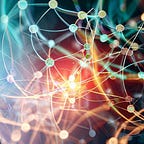Keywords and notes on a humanoid AI (Part 2)
In my article “Keywords and Notes on a Humanoid AI”, I had made some theoretical considerations, which, in addition to a three-dimensional network structure, were about the ability to abstraction and data reduction as well as about an interpreter, a kind of ME.
I would now like to advance and concretize these considerations in the direction of an implementation for a humanoid AI.
1. Implementation of a three-dimensional mesh:
The three-dimensional neural network is realized through a combination of advanced materials and structures:
a) Materials:
- Neuromorphic hardware: memristors and spintronic components
- 3D-printed nanostructures: carbon nanotubes and graphene-based materials
- Optical components: photonics chips and optical fibers
- Biomimetic materials: hydrogels and DNA-based nanostructures
b) Structure:
- Hierarchical organization: core-shell structure and fractal patterns
- Functional clusters: Specialized regions and dynamically reconfigurable connections
- Gradual density variations: Higher density in critical areas
- Adaptive networking: Self-organizing connections
- Multiscale architecture: micro, meso, and macrostructures
This combination enables a highly adaptive, efficient and robust 3D neural network that can dynamically reduce complexity through topological adjustments.
2. Integration of the five senses:
The integration of the five senses (sight, hearing, smell, taste and touch) takes place through:
a) Sensory input layers: Specialized layers for each sense
b) Sensory Processing Regions: Dedicated areas in the 3D mesh for every sense
c) Multisensory integration: A central region for processing and merging the different sensory impressions
d) Attention mechanisms: To focus on relevant sensory information
The physical implementation includes specific sensors for each sense, placed at the “periphery” of the 3D network. The processing regions are arranged in a hierarchical structure, similar to the human brain.
3. Implementation and storage of basic data:
The selection and implementation of basic data is crucial for the functionality and learning ability of the system:
a) Categories of basic data:
- Basic sensory patterns
- Conceptual basics
- Basic behaviors and reactions
- Simple logical and mathematical concepts
b) Selection criteria:
-Universality
- Fundamental nature
-Diversity
- Cultural neutrality
c) Implementation:
- Distributed storage in the 3D network
- Encoding into neuronal activation patterns
- Integration into the overall system
d) Structuring of the data:
- Hierarchical organization
- Associative networks
e) Adaptive updating:
- Mechanisms for the continuous updating and integration of new knowledge
4. Development of a 3D network language:
The development of a special “3D network language” is crucial for the effective implementation of the 3D neural network:
a) Basic concept:
- Encoding information as three-dimensional patterns or “figures” in the network
b) Elements of the 3D network language:
- Voxels as basic units
- 3D shapes as concept representations
- Topological relationships between shapes
c) Coding mechanisms:
- Concept coding: Transforming data into 3D shapes
- Relation coding: Representation of relationships between concepts
d) Grammar:
- Rules for combining and interacting 3D shapes
e) Dynamic aspects:
- Rules for the temporal development of 3D shapes
f) Interpretation and decoding:
- Mechanisms for extracting meaning from 3D shapes
This 3D network language allows:
- Natural representation of spatial and conceptual relationships
- Encoding abstract concepts in intuitive spatial patterns
- Support for emergent properties
- Potential for efficient parallel processing
5. Challenges and solutions:
Various challenges arise in the implementation of this complex 3D neural network:
a) Scalability and storage efficiency:
- Solutions: sparse matrix techniques, compression algorithms, dynamic loading/unloading
b) Calculation intensity:
- Solutions: Distributed computing, GPU optimization, approximate calculation methods
c) Convergence and stability:
- Solutions: normalization techniques, adaptive learning rates, regular stability checks
d) Topology preservation:
- Solutions: Special cost functions, topological constraints, periodic review
e) Efficiency of octree operations:
- Solutions: caching mechanisms, parallelization, heuristic predictions
f) Balancing Resolution and Performance:
- Solutions: Adaptive multi-resolution approach, dynamic resolution adjustment
g) Integration of different learning paradigms:
- Solutions: Hybrid learning algorithm framework, dynamic weighting
h) Visualization and analysis:
- Solutions: Specialized 3D visualization tools, dimensional reduction, VR/AR technologies
i) Continuous learning:
- Solutions: Elastic weight adjustment, replay mechanisms, continuum theory concepts
Inference:
The development of a three-dimensional neural network that integrates the five senses and uses a special 3D network language represents a completely novel approach in artificial intelligence. By combining advanced materials, adaptive structures, and innovative processing mechanisms, this system opens up new possibilities for modeling complex phenomena and solving challenging problems in various scientific and technological fields.
The implementation challenges are significant, but the proposed solutions offer ways to overcome these obstacles. The continuous development and refinement of this system can lead to new insights in AI research and its applications.
Appendix
Python programming (examples):
# Basic structure of the 3D mesh
class Octree:
def __init__(self):
self.root = Node()
def create_sub_region(self, name):
return self.root.create_child(name)
class Node:
def __init__(self):
self.children = {}
self.data = None
def create_child(self, name):
self.children[name] = Node()
return self.children[name]
# Sensory Processing
class SensoryInput:
def __init__(self):
self.visual = VisualInput()
self.auditory = AuditoryInput()
self.olfactory = OlfactoryInput()
self.gustatory = GustatoryInput()
self.tactile = TactileInput()
def process_inputs(self, sensory_data):
# Processing of the various sensory inputs
pass
# Multisensory integration
class MultisensoryIntegration:
def __init__(self, octree):
self.integration_region = octree.create_sub_region('multisensory')
self.attention_mechanism = Attention3D(octree)
def integrate_senses(self, processed_sensory_data):
# Integration of the different sensory impressions
pass
# Knowledge Representation
class DistributedKnowledgeBase:
def __init__(self, octree):
self.octree = octree
self.semantic_regions = {}
self.episodic_memory = EpisodicMemory(octree)
self.procedural_memory = ProceduralMemory(octree)
def store_semantic_knowledge(self, concept, data):
# Storage of semantic knowledge
pass
# 3D network language
class ConceptShape:
def __init__(self, voxels):
self.voxels = voxels
self.center = self.calculate_center()
def calculate_center(self):
# Calculation of the center of gravity of the mold
pass
class ConceptEncoder:
def encode_concept(self, concept_data):
# Coding concepts into 3D shapes
pass
# Main system
class NeuralNetwork3D:
def __init__(self):
self.octree = Octree()
self.sensory_input = SensoryInput()
self.integration = MultisensoryIntegration(self.octree)
self.knowledge_base = DistributedKnowledgeBase(self.octree)
self.concept_encoder = ConceptEncoder()
def process_environment(self, environmental_data):
# Main processing loop
pass